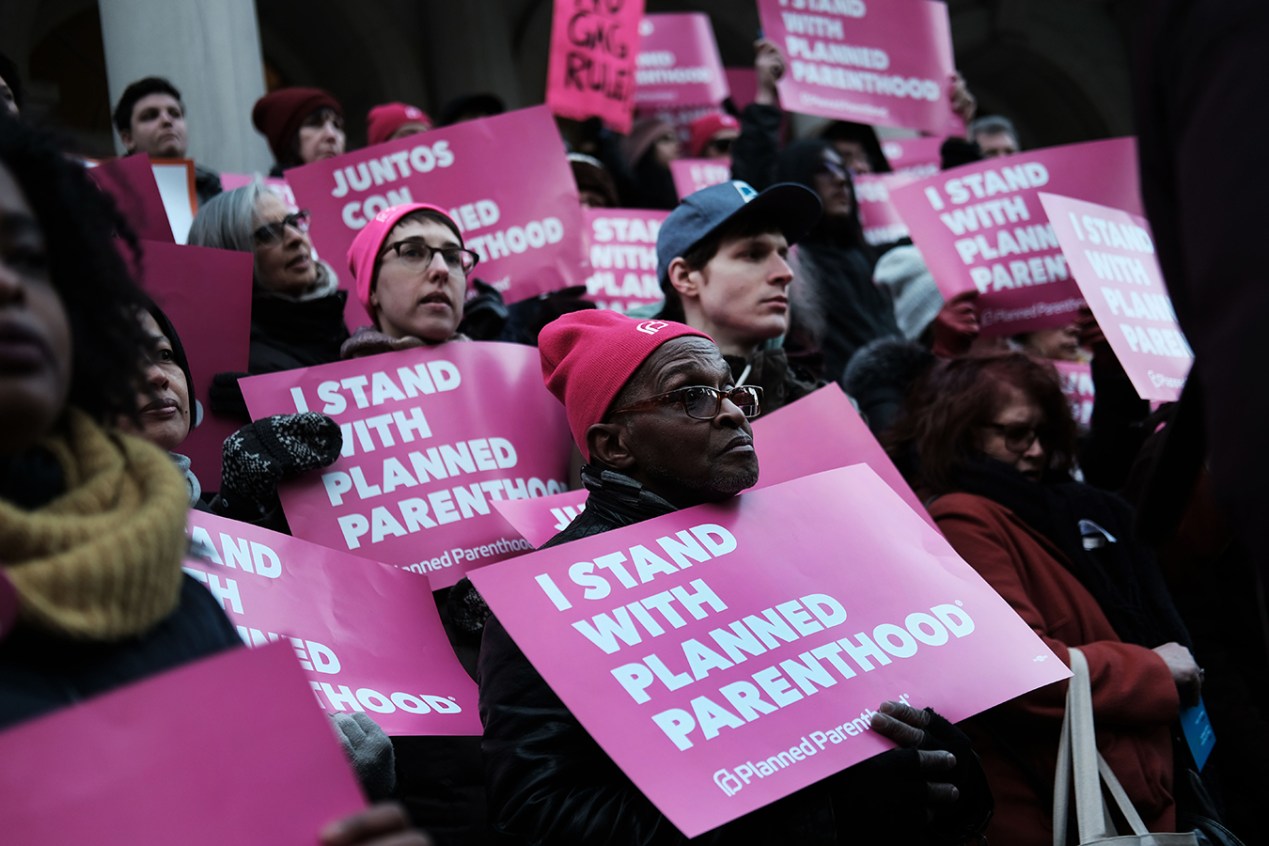State attorneys generals and women’s health advocates hoping to block in court new Trump administration rules for the federal family planning program face one major obstacle: The Supreme Court upheld very similar rules in 1991.
Those rules were summarily canceled after a change in administrations. But the court is arguably more conservative than it was 28 years ago.
Still, those who oppose the rules say that the ground has shifted enough to help them succeed this time. They point to protections enacted in the 2010 Affordable Care Act and changes made by Congress in the mid-1990s in funding bills for the family planning program, known as Title X.
“I don’t file a lawsuit unless I’m confident we will prevail,” Washington state Attorney General Bob Ferguson said at a news conference Monday to announce his plans to sue the Trump administration over the changes to the program. “We’ve filed 17 cases against this administration,” he said. “We have not lost a case yet.”
The new rules for Title X, posted Friday by the Department of Health and Human Services, are aimed primarily at evicting Planned Parenthood from the program, a longtime goal of abortion opponents. Currently no Title X money can be used for abortions, but conservative groups argue that since many Planned Parenthood affiliates receiving Title X support also provide abortions, the federal family planning money could be improperly commingled with funds used for the procedure.
Planned Parenthood affiliates serve about 40 percent of the program’s 4 million patients.
Specifically, the rules would forbid family planning providers in almost all cases from referring pregnant patients for abortion. It also would rescind previous regulations requiring providers to give women with unintended pregnancies “nondirective” counseling about all their options, which means that providers neither encourage nor deter women from any specific action. Women’s health advocates, including Planned Parenthood, argue that this provision would hamper physicians and other providers from giving women unbiased advice, which they say is a violation of medical ethics.
The new regulations also would require any providers that also perform abortions to make those facilities physically and financially separate from their clinics that receive federal funds.
Planned Parenthood has not specifically announced that it will sue, but President Leana Wen was clear last week in a call with reporters that “Planned Parenthood cannot participate in a program that would force our providers to compromise their ethics.”
And several other lawsuits are being lined up in anticipation of the rules’ formal publication in the Federal Register, expected next week.
The American Civil Liberties Union announced it will sue on behalf of the National Family Planning & Reproductive Health Association, which represents publicly funded family planning providers and administrators, as well as the Cedar River Clinics in Washington state. The Center for Reproductive Rights has said it will sue on behalf of family planning providers in Maine.
Several other state officials have said that they will sue, including those in New York, Oregon and California.
Proponents of the administration’s move point to the 1991 Supreme Court case Rust v. Sullivan as proof that the rules are constitutional. In a 5-4 decision, the court said that very similar regulations issued by the Reagan administration in 1988 were an acceptable exercise of executive authority and did not violate the underlying law or the Constitution.
Although the rules were upheld, subsequent legal action meant they were in effect only for a month before again being blocked and then rescinded by President Bill Clinton in 1993.
“The Protect Life Rule, which the U.S. Supreme Court has upheld, will prevent organizations like the nation’s largest abortion business, Planned Parenthood, from funding their abortion activities through the Title X program,” said a statement from Alliance Defending Freedom, a law firm that opposes abortion.
Opponents of the new rules, however, insist that the situation is different now. For one thing, argued several members of Congress in a letter to HHS, the department may have violated the federal Administrative Procedure Act that governs the crafting of regulations. For example, the letter said, HHS “declined to deem the Title X rule economically significant — completely disregarding the considerable health-related costs the rule would impose — and failed to conduct a comprehensive regulatory impact analysis.”
And while the court is more conservative than it was in 1991, “there are two new developments; two statutes passed by Congress, that impose new requirements,” Washington Assistant Attorney General Jeff Sprung told reporters.
One is language added to the spending bill that funded HHS in 1995 and was renewed in subsequent years. It restates the ban on using family planning funds for abortion, but also stipulates that “all pregnancy counseling be nondirective.”
In 2010, the Affordable Care Act added to that, with language barring HHS from issuing any regulation that “interferes with communications regarding a full range of treatment options between the patient and the provider” or that “restricts the ability of health care providers to provide full disclosure of all relevant information to patients making health care decisions,” among other things.
Leah Litman, an assistant professor of law at the University of California-Irvine, said the now-more-conservative Supreme Court might not necessarily accept those arguments, as well as others likely to be raised, but there is no question that “the underlying scope of [the Title X program] has changed” since 1991.
